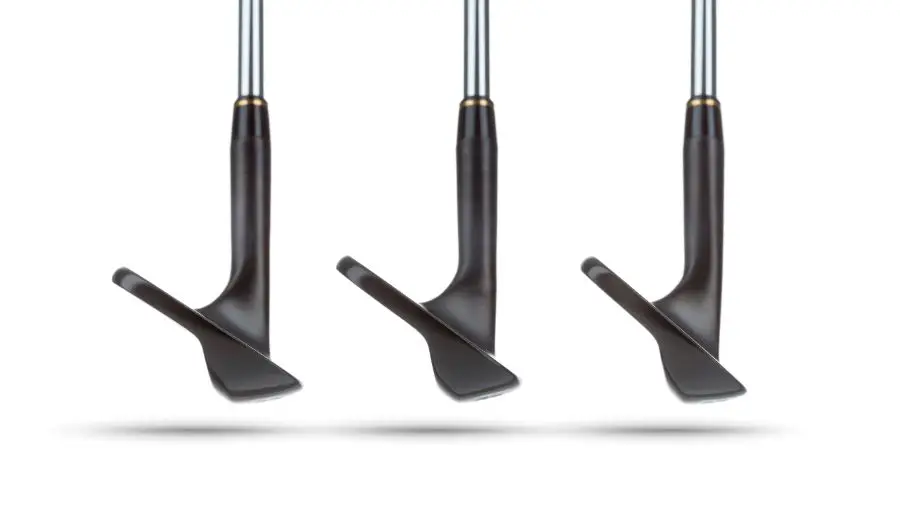M grind and S grind wedges are two of the most common wedge designs you will find out on the course. Both wedge designs offer superior versatility for hitting a wide variety of shots on the course. However, there are subtle differences between the two wedge grinds that are important to understand.
In the article below, we are going to cover all you need to know about M grind and S grind wedges. We will look at the main differences between the design and when to use which type of wedge. There is a lot to cover so let’s get started.
What Are The Main Differences Between M Grind And S Grind Wedges
M grind and S grind wedges are two types of wedges that are designed with specific grind patterns on the sole of the club. These grind patterns can affect the club’s performance in different types of bunkers and turf conditions and can be useful for a variety of shots around the green. Below we outline the main feature differences between M grind and S grind wedges and when to use each grind.
| Feature | M Grind Wedge | S Grind Wedge |
| Sole Shape | Narrow, crescent-shaped | Wider, more rounded |
| Amount of Bounce | Medium | Low |
| Suitability | A variety of bunkers and turf conditions | Firmer bunkers and turf conditions |
| Preferred Swing Type | Neutral or slightly steep | Shallow or sweeping |
M Grind Wedge Design
An M grind wedge has a narrow, crescent-shaped sole with a medium amount of bounce. This design is meant to provide versatility in a variety of bunkers and turf conditions.
The medium bounce allows the club to slide through the sand and turf smoothly. This makes it easier to hit shots with control and precision.
M grind wedges are often preferred by players who have a neutral or slightly steep swing and who want a wedge that can handle a variety of shots around the green.

S Grind Wedge Design
An S grind wedge has a wider, more rounded sole with a low amount of bounce. This design is meant to provide more versatility in firmer bunkers and turf conditions.
The low bounce allows the club to dig into the sand and turf more effectively, making it easier to hit shots with a higher trajectory and softer landing.
S grind wedges are often preferred by players who have a shallow or sweeping swing and who want a wedge that can handle a variety of shots around the green.
However, this design does have its drawbacks. While this grind is useful in most conditions, its low bounce can cause the club face to dig into the ground. Some golfers may find that S grind wedges dig in too much in wet conditions or in soft sand leading to chunked shots.
When To Use Each An M Grind And S Grind Wedges
Now that we have a good understanding of the differences between the wedges, let’s take a look at when and who should use them.
When To Use M Grind Wedge
M grind wedges are the more versatile design. These wedges are suited for a variety of bunkers and turf conditions. They are very useful for a variety of shots around the green.
They are particularly useful for players who have a neutral or slightly steep swing and who want a wedge that can handle a variety of shots around the green.
When To Carry A S Grind Wedge
S grind wedges are best suited for firmer bunkers and turf conditions and can be useful for a variety of shots around the green.
This design is useful for players who have a shallow or sweeping swing and who want a wedge that can handle a variety of shots around the green.
Final Thought
Choosing between an M grind and an S grind wedge will depend on the individual player’s swing and the specific conditions of the course and shot.
Both grinds can be useful in different situations. It’s up to the golfer to decide which one is best for a given shot. It may be helpful to try out both grinds and see how they perform for you.
We always recommend taking lessons with your local golf professional when changing or upgrading equipment You can use the insights from these lessons to buy your new wedges at your local pro shop or go online and order them.
Hopefully, you liked this article and found it informative. Check out our other blog posts if you liked this one!


